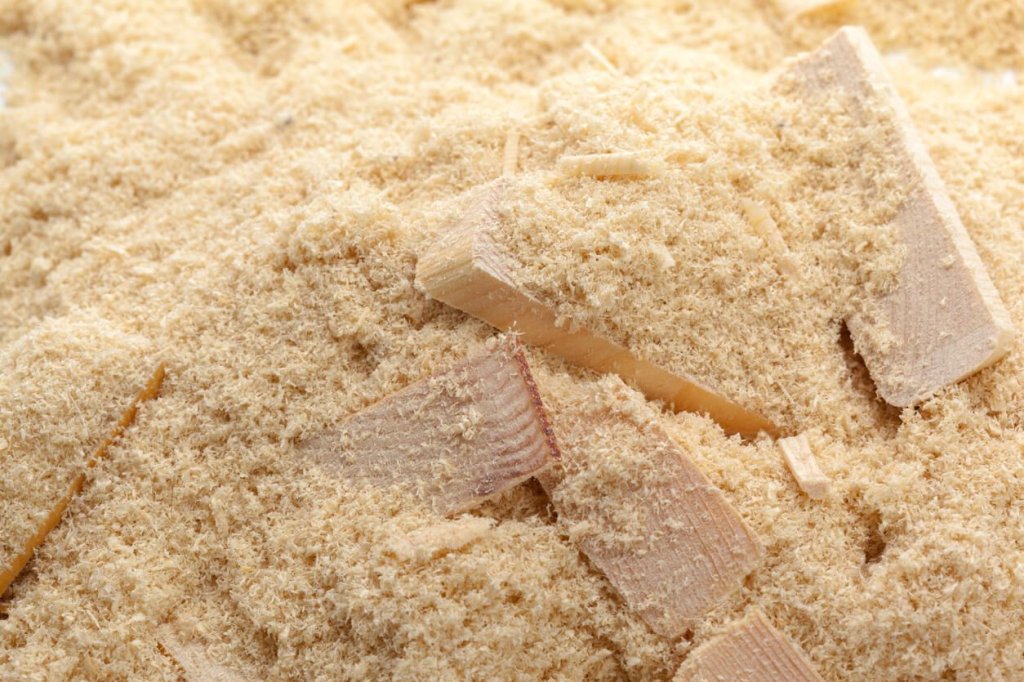Wood Dust Safety Talk
When you work in an environment that produces high amounts of wood dust, you should be aware of the associated hazards. Wood dust is a known carcinogen. This means that prolonged exposure can lead to cancer.
Learning the proper ways to limit your exposure to wood dust can help prevent you from developing related injuries and illnesses. In this toolbox talk, we'll touch on a few precautions you can take and potential warning signs to watch out for.
What is wood dust?
Wood dust, also known as sawdust, are fine wood particles that are a by-product of woodworking processes such as sawing, sanding, and other operations.
Is wood dust harmful?
Wood dust is considered a potential health risk as the small particles can become airborne and irritate the skin and eyes, in addition to being breathed into the lungs.
Wood dust may also contain mold and fungi, two biological organisms commonly found on wood, which cause their own negative health effects.
How much exposure to wood dust is dangerous?
Prolonged exposure to wood dust is your main concern for safety. OSHA recommends an eight-hour exposure limit of 5 mg/m3 for most hard wood and soft wood, with stricter guidelines for certain wood species, like the Western red cedar.
How to reduce wood dust exposure
It is vital for the health of you and those working around you to take the right precautions in order to reduce your amount of wood dust exposure.
1. Use engineering controls
There are several engineering controls that can be put into place to reduce the amount of dust that you are exposed to while working. Good ventilation is the best example. Installing a ventilation system near the source of the wood dust can significantly reduce your risk.
2. Stay tidy
Good housekeeping is just as important in the workplace as it is at your home. Clear wood dust from the work area between tasks or after each job to limit exposure.
3. Wear PPE
Any time that you are in an area with word dust, the proper PPE, or personal protective equipment, should always be worn, including a respirator, safety goggles, and gloves.
PPE is designed to protect you from the dangers of the jobsite, including wood dust.
4. Avoid the point of operations
If you have the ability to step away from the area where wood dust is being created, do so. Do not be in that work area unless you are needed.
If you must be in the same work area, consider using physical barriers to keep the majority of the wood dust away from you while working.

Wood dust health effects
It is important that all employees know the signs and symptoms of wood dust exposure. There are mild health effects that you may feel (like irritation) and then there are more severe symptoms (like shortness of breath). Both can be detrimental to your health.
All employees must be aware of these health effects to better protect themselves and their coworkers.
Eye, nose, and throat irritation
Irritation of the eyes, nose, and throat is common when working around wood dust and is considered an occupational hazard.
While there are usually no long-term or serious effects if symptoms are minor, prolonged irritation can lead to more serious problems.
Shortness of breath
If you are experiencing shortness of breath after working around wood dust, seek medical attention. This can occur when the walls of your lungs become inflamed from inhaling wood dust, making your air passage swollen.
One of the biggest concerns with this issue is it turning into pneumonia or another major health issue.
Conjunctivitis
Conjunctivitis, also known as pink eye, is an infection of the eye. This infection can occur when the mucus membrane becomes irritated.
If you have pinkeye, you need to see a medical professional for an antibiotic to clear it up.
Skin irritation
Skin irritation can be a common occurrence for individuals working around wood dust, especially if you already have sensitive skin. Dermatitis and allergic reactions can occur from wood dust or wood sap.
Some cases are mild and may able to be treated with home care, while more severe cases may need the help of a medical professional.
Types of wood most common to cause health concerns
When it comes to working with wood, certain types are more prone to cause health problems or irritation than others. You should always be aware of the type of wood that you are working with, just in case a health concern arises.
Some of the wood types that are more likely to irritate your eyes, nose, skin, and throat are:
Alder
Birch
Oak
Maple
Spruce
Teak
Walnut
Rosewood
Teak Walnut
Mahogany
Cedar
Douglas Fir
All of these woods are associated with different types and levels of risk, which vary from dermatitis to cancer and everything in between. If you are someone who works predominantly with wood, you should educate yourself on these type-specific hazards.
Employees most at risk for wood dust exposure
Workers who are continually exposed to wood dust are most at risk for severe health problems. The workers that fall into this category include:
Construction workers
Shipbuilding workers
Carpenters
Sawmill workers
Logging workers
Furniture engineers
Cabinetry workers
Find and schedule topics faster
Raken's toolbox talk app makes it easy to choose from a pre-loaded library (or upload your own), then schedule and assign topics for any project. We'd love to show you how in a demo and get you started on a free trial.